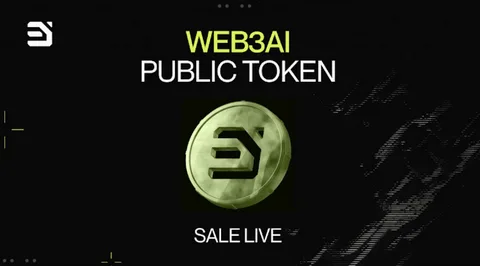Introduction
The cryptocurrency market is no stranger to dramatic price swings, but when major players—commonly referred to as “whales”—take action, the ripples are often felt across the ecosystem. Recently, ETH, the second-largest cryptocurrency by market cap, experienced a significant price drop below $3,300, driven in part by whale selloffs totaling a staggering $292 million.
In this post, we’ll analyze the factors behind this event, examine its impact on the broader crypto market, and explore what it could mean for the future of ETH.

What Caused the ETH Price Drop?
The ETH price drop below $3,300 has captured the attention of traders and investors worldwide. With whale selloffs playing a critical role in this downward pressure, the crypto community is buzzing with speculation about the reasons behind this behavior.
Was it a strategic move, a reaction to market conditions, or part of a broader trend? This blog post breaks down the mechanics of the selloffs, the reactions from the market, and what this could mean for ETH moving forward.
Whale Selloffs: A $292M Move That Shook the Market
Cryptocurrency whales are investors or entities that hold large amounts of digital assets, capable of influencing market trends with their transactions. When these players begin offloading assets en masse, the effects are often dramatic.
What Exactly Happened?
Over a period of 48 hours, ETH whales sold off $292 million worth of ETH, sparking a chain reaction that sent ETH prices plummeting below the critical $3,300 support level. This selloff accounted for a significant chunk of the trading volume, overwhelming buy orders and creating downward pressure. While it’s common for whales to rebalance portfolios, the sheer scale of this event was unusual.
Possible Motivations for the Selloff
- Profit-Taking Amid Market Uncertainty
Many speculate that whale selloffs were motivated by a desire to lock in profits ahead of potential regulatory or macroeconomic risks. With concerns about inflation, interest rate hikes, and geopolitical instability, some ETH whales may have decided it was time to exit temporarily. - Reaction to Market Trends
The broader crypto market has seen increased volatility in recent months. Bitcoin’s price fluctuations and declining sentiment across altcoins could have prompted whales to act defensively. - Fears of Future Declines
Technical analysts have pointed out that ETH showed signs of weakening support at $3,300 before the selloff occurred. This may have triggered algorithmic trading systems or human traders to offload assets to avoid steeper losses.
How the ETH Price Drop Affected the Market
The price drop caused by whale selloffs had a ripple effect that extended beyond ETH itself. Let’s explore the broader implications:
Short-Term Panic Among Retail Investors
Retail investors often react strongly to whale selloffs, interpreting them as a signal of impending doom. As ETH prices fell below $3,300, many smaller investors liquidated their holdings out of fear of further declines, exacerbating the downward trend. On-chain data shows an uptick in transactions involving smaller wallets during the selloff, confirming a wave of panic selling.
Decline in Market Confidence
When whales sell significant amounts of crypto, it can dent confidence in the market’s stability. In this case, the ETH price drop led to skepticism about its short-term potential, even among seasoned investors. The resulting dip in sentiment was reflected in reduced trading activity and lower prices for other cryptocurrencies.
Opportunities for Bargain Hunters
While some saw the ETH price drop as a reason to exit, others viewed it as an opportunity. Bargain hunters and long-term investors took advantage of the lower prices to accumulate more ETH, betting on a future recovery. This counteraction helped stabilize prices somewhat, though ETH has yet to reclaim its previous levels.
Technical Analysis: Breaking Below $3,300 Support
The Importance of the $3,300 Level
The $3,300 level had long been considered a critical support zone for ETH, serving as a psychological and technical barrier. Its breach signaled a shift in market dynamics, with bearish sentiment taking control. Analysts have pointed to decreasing trading volumes and weakening Relative Strength Index (RSI) levels as early warning signs of this move.
Key Indicators to Watch
- Trading Volume
Monitoring trading volume is essential to gauge the strength of any price movement. The spike in sell volume during the whale selloffs indicated strong bearish pressure, which is crucial for traders to consider in the near term. - Moving Averages
As ETH dipped below its 50-day and 100-day moving averages, technical analysts flagged it as a bearish signal. If the price continues to stay below these averages, further declines could be on the horizon. - Support and Resistance Levels
With $3,300 breached, the next major support levels are at $3,000 and $2,800. Resistance is now expected around the $3,300 mark, which could serve as a hurdle for any recovery attempts.
Long-Term Implications for ETH
While the short-term impact of whale selloffs has been disruptive, the long-term outlook for ETH remains a topic of debate.
The Bullish Case
Supporters of ETH argue that the price drop presents a buying opportunity. They cite the continued growth of the Ethereum ecosystem, including the adoption of Ethereum 2.0 and Layer 2 solutions, as reasons for optimism. Additionally, the rise of decentralized finance (DeFi) and non-fungible tokens (NFTs) continues to drive demand for ETH as a utility token.
The Bearish Case
On the flip side, skeptics warn that ETH may face additional headwinds, including increased competition from other blockchain networks like Solana and Cardano. Regulatory challenges and potential delays in Ethereum’s roadmap could also weigh on investor sentiment.
The Role of Whales Moving Forward
The actions of ETH whales will remain a key factor in shaping market trends. While the recent selloffs caused a significant price drop, future whale activity—whether in the form of buying or selling—will likely continue to influence the market.
Conclusion: What’s Next for ETH?
The recent ETH price drop below $3,300, driven by $292 million in whale selloffs, has sparked intense discussion about the future of the cryptocurrency. While the selloffs created short-term panic, they also provided opportunities for long-term investors to accumulate assets at lower prices. The question remains: will ETH recover, or is this the start of a deeper downturn?
As the market watches for signs of stabilization, traders and investors should keep an eye on key technical indicators and whale activity. The story of ETH is far from over, and its resilience will likely be tested in the weeks to come.
What are your thoughts on the recent ETH price drop? Do you see it as a buying opportunity or a reason for caution? Share your insights in the comments below—we’d love to hear your take on this pivotal moment in the crypto market.






